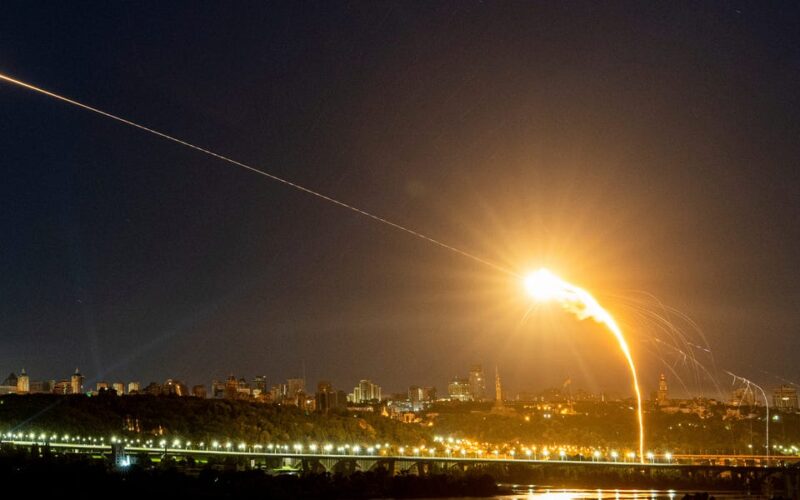Six NATO countries are joining forces to create a “drone wall” to defend themselves against Russia, AFP news agency reported.
Over the weekend, ministers from Finland, Norway, Poland, Estonia, Latvia, and Lithuania convened to discuss a coordinated system to help defend against Russian provocations and smuggling attempts, per the Financial Times.
“This is a completely new thing — a drone wall stretching from Norway to Poland, and the goal is to use drones and other technologies to protect our borders,” Lithuania’s interior minister Agnė Bilotaitė reportedly told the Baltic News Service.
Further details on when the wall could be in place and how it would function remain unclear, but Bilotaitė said that EU funding could be used to support the project.
Estonia’s Interior Minister Lauri Läänemets said of the proposed wall: “Drone surveillance and anti-drone capability is crucial both for deterrence and for countering the influence activities of our eastern neighbor.”
“The one who is even a step ahead of the adversary will succeed, but this advantage can be measured in days, as a countermeasure will be found to each measure very quickly, and the cycle will repeat itself,” he added.
Business Insider has contacted Agnė Bilotaitė’s office for comment.
It comes after a series of provocations involving Russia and the Baltic region.
Last week, a draft Russian decree proposing revised maritime borders with Lithuania and Finland in the Baltic Sea sparked concern in the region.
The Lithuanian foreign ministry said it was a calculated provocation designed to intimidate neighboring countries.
“This is further proof that Russia’s aggressive and revisionist policy is a threat to the security of neighbouring countries and Europe as a whole,” the department’s statement said, per Lithuanian National Radio and Television.
Russian border guards last week also removed around 24 of 50 buoys that mark shipping routes on the Narva River — which marks the border with Russia, an incident that EU High Representative Josep Borrell labeled “unacceptable.”
The Institute for the Study of War think tank said the move “set conditions to further question maritime borders and test NATO resolve.”
Some officials have also warned that Russia may launch an attack on NATO within the next few years.
Troels Lund Poulsen, the Danish defense minister, told the Jyllands-Posten newspaper in February: “It cannot be ruled out that within a three- to five-year period, Russia will test Article 5 and NATO’s solidarity. That was not NATO’s assessment in 2023. This is new knowledge that is coming to the fore now,” per Reuters.
German Defense Minister Boris Pistorius told Der Tagesspiegel in January that while he didn’t expect a Russian attack on Nato “for now,” it could be possible within “a period of five to eight years.”
However, some experts have said that Russia is in no position to make such a move, particularly after being weakened by the Ukraine conflict.
Putin himself said in March that he doesn’t intend to attack any NATO members, saying such claims were “complete nonsense.”
“The threat posed by Russia to NATO is unlikely to be an invasion; it’s more likely to come from a range of other military and nonmilitary threats — what are often called hybrid threats,” Ruth Deyermond, an expert on the Russian military at King’s College London, previously told BI.
Source link
lol

